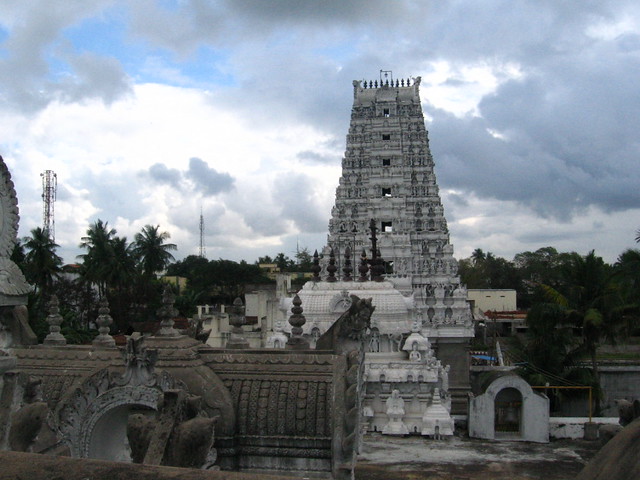We all know that India is the cradle of civilization, but how many of us know that it is also one of the first (if not, the first!) countries which had the origins of the modern-day democratic system of government?
Even before the “Magna Carta” was signed 450 years ago and Constitutional Democracy was established in the USA 1000 years later, Uthiramerur in Tamil Nadu had a real written constitution and an advanced voting system for self-government 1,200 years ago.
The Foundations of Uthiramerur and the Historical pieces of evidence…
In the present day, approximately 90 kilometres from Chennai, in the Kancheepuram district, Uthiramerur is a city with a 1,250-year history. Around 750 A.D., Nandivarman II of the Pallavas founded it. It was controlled by the Pallavas, Cholas, Pandyas, Sambuvarayars, Vijayanagara Rayas, and Nayakas in that order.
The Sundara Varadaraja Perumal, Subramanya, and Kailasanatha temples are the three most significant temples in the village. Inscriptions from the periods of Raja Raja Chola (985–1014 A.D.), his son Rajendra Chola, and the Vijayanagar monarch Krishnadeva Raya are particularly abundant in the three temples. Both Krishnadeva Raya and Rajendra Chola travelled to Uthiramerur.
The village assembly mandapa is located in the centre of the town, a city based on the tenets of the agama books. The mandapa serves as the point of reference for all of the temples. This hamlet had a complex and well-developed voting system, and there was even a written constitution dictating how elections should be conducted, about 1,100 years ago.
The walls of the village assembly (grama sabha mandapa), a rectangle formed of granite slabs, are etched with information about this electoral village democracy system. The inscriptions on the walls provide astounding information regarding the organisation of wards, the requirements for candidates running for office, the standards for disqualification, the method of voting, the makeup of committees with elected members, their duties, the authority to dismiss offenders, etc.
A variety of secular village transactions, including those relating to administrative, judicial, commercial, agricultural, transportation, and irrigation regulations and handled by the then village assembly, are also inscribed on the walls of the mandapa, picturing the clarity of the effective management of village society in earlier times. The elected officials may even be called back by the villagers if they do not perform their duties.
The Modus Operandi of the system…
A retired chief epigraphist and instructor, R. Vasanthakalyani, states that all members of the village, even infants, had to be present when elections were held at the village assembly mandapa in Uthiramerur. Only those who were ill or had made a pilgrimage were exempt. There were committees for the upkeep of 11 irrigation tanks, roads, drought relief, gold testing, and other things.
Another astounding aspect of the village’s electoral system was that the Uthiramerur village assembly had also written the election constitution. There was an elected representative in each of the 30 wards that made up the hamlet. The requirements were rather specific for individuals who wished to run. The age restriction, ownership of the real estate, and minimal educational need were the key requirements. Candidates have to be over 35 and under 70 to be eligible for election. Election contestants had to be landowners who paid taxes.
Another requirement was that these owners must own a home constructed on land that is lawfully theirs. For the next three periods, each of which lasted a year, a member of any of the committees was prohibited from running again. Elected officials were disqualified for accepting bribes, stealing from others, engaging in incest, or acting against the general welfare.
Thus, it was a partially democratic electoral system with a written constitution. Even though it was only a small community, the main issue was a self-governance system. Each committee’s operation included functions for the legal, business, agricultural, irrigation, and transportation sectors.
The cherry on top was that everyone in the area had to be present for the elections. Only those who were ill were exempt. That reveals the purpose of undertaking it as another dharmic ritual while involving society. Any social process could only become an essential component of communal life through such a ritual.
Unfortunately, neither our school curriculum nor any of our further education institutions include instruction on this complex electoral democracy system. Only a select few of us are aware of these sophisticated and developed electoral democracies, which Paramacharya of Kancheepuram Shankara Matham wrote about in a book containing his teachings.
The Conclusion…
Hence, the Uthiramerur model is one of the most beautiful events from the ancient history of India that reflects the sane, organized and wonderful picture of the modern-day democratic system of India and the study of this remarkable village & its well-organised democratic system will surely serve the purpose of instilling a sense of pride in how our nation was also very robust in every aspect of the techniques and modus operandi of the democracy that are practised today, which is keeping the soul of Bharat alive and burning.
